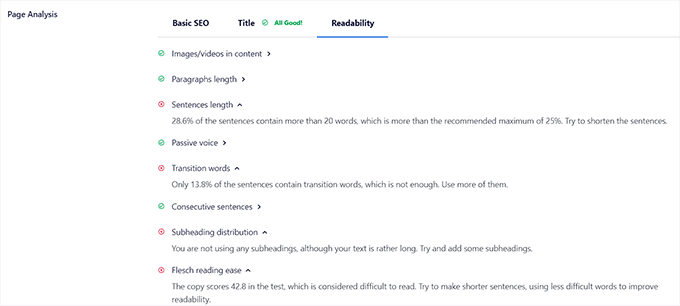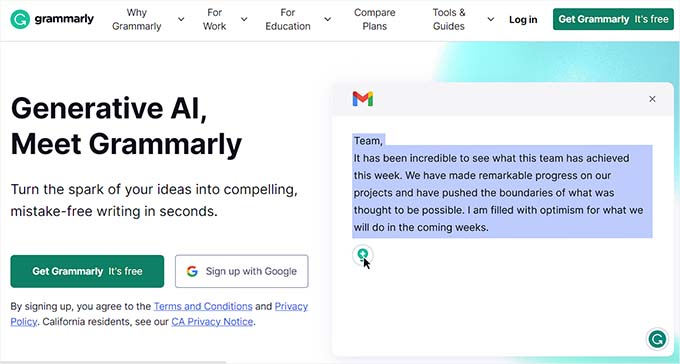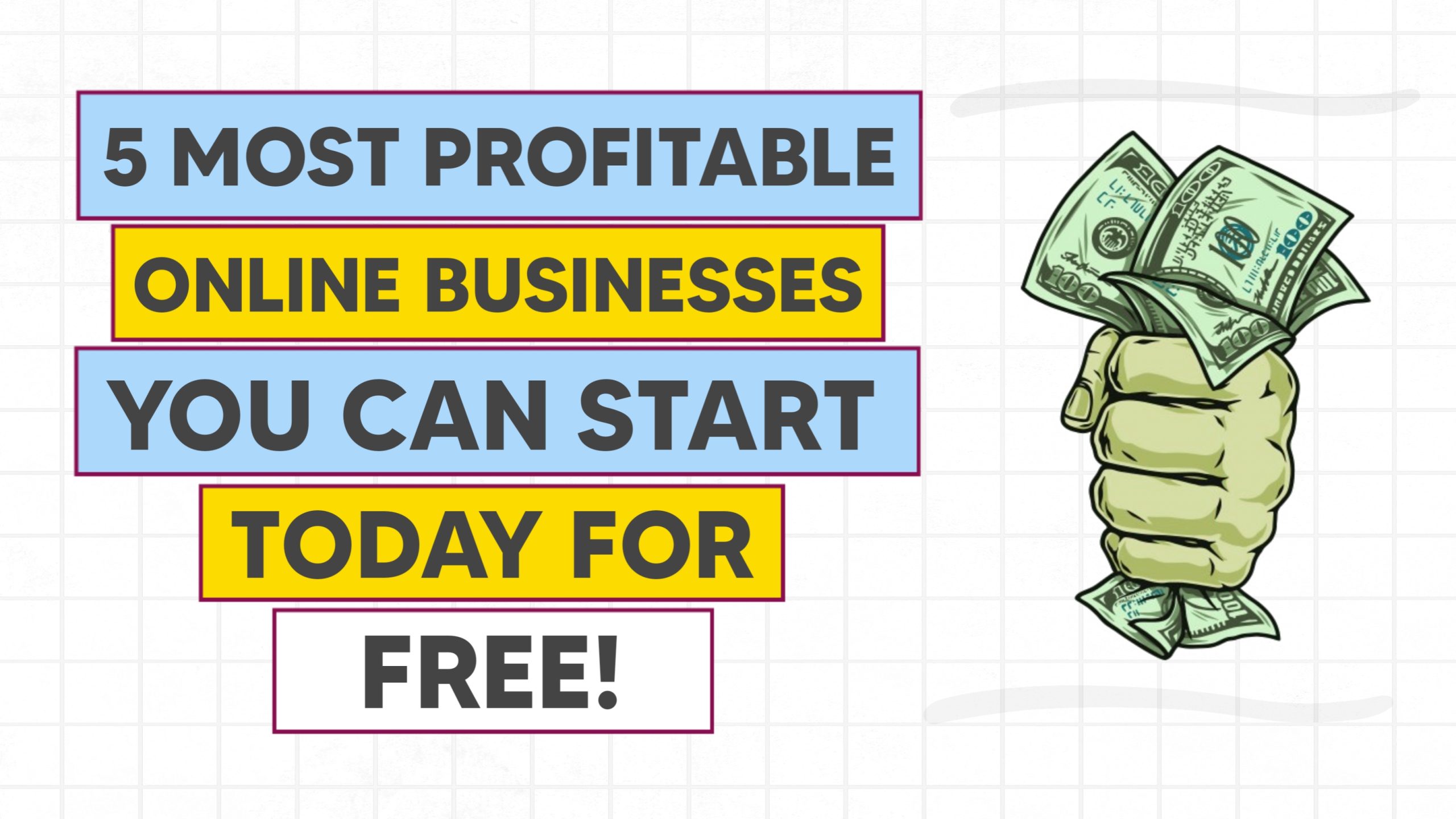WORDPRESS
8 Best Writing Assistant Software for WordPress (Compared)

Are you looking for the best writing assistant software for WordPress?
Writing assistant software uses artificial intelligence (AI) to help users improve their creative process. This can help you produce more polished and professional writing for your WordPress blog.
In this article, we have handpicked some of the best writing assistant software that you can use to improve the content on your WordPress site.

Why Use Writing Assistant Software in WordPress?
Using writing assistant software on your WordPress website can help you find and correct grammatical errors and spelling mistakes, which can make your writing more clear and concise.
The software can even provide feedback on the writing style and tone of your blog posts, helping you to improve your writing skills over time.
Plus, you can also brainstorm new ideas for articles, product descriptions, and copywriting using your writing assistant software.
For example, if you want to write a product description for gardening equipment that you are selling in your online store, then you can use the writing assistant to create a simple draft, make your writing easier to read, optimize it for specific keywords, and more.
Using this software can also improve your website visibility by helping you optimize your WordPress blog for search SEO, increase readability, and check your content for plagiarism.
That being said, let’s take a look at some of the best writing assistant software for WordPress.
1. All in One SEO for WordPress


All in One SEO for WordPress is the best WordPress SEO plugin that can also be used as a writing assistant.
The plugin comes with a powerful keyword research tool that can help you find the right keywords to target in your content.
AIOSEO encourages authors to improve their writing by providing suggestions to use active voice, insert transition words, distribute subheadings better, and hit a specific Flesch reading score.
It is the best writing assistant that comes with a built-in content analysis tool that analyzes your blog posts for keyword density, readability, and title tags.


The plugin also comes with a headline analyzer tool that helps you write SEO headlines to drive more traffic to your website.
This tool checks the word balance, sentiment, power words, and emotional words used in the heading to help rank your blog post higher.


Pros
- The plugin allows you to generate AI titles and meta descriptions for your WordPress posts.
- All in One SEO helps you optimize your content for both SEO and readability.
- It comes with a schema markup feature for content improvement.
- It lets you add a title, description, and image for your Facebook and Twitter accounts.
- All in One SEO comes with a Chrome extension that lets you evaluate your content’s SEO on the front end.
Cons
- Its schema markup feature is only available in the paid plan.
Why we recommend using All in One SEO: All in One SEO is the best AI writing assistant on the market because it allows you to improve the overall content quality directly in the block editor. It helps you target the right keywords and improve your site’s SEO.
Plus, it also offers other features like HTML sitemaps, redirects, social media integrations, and a broken link checker. These features make it the perfect choice if you want a writing assistant tool designed specifically for search engines.
2. Semrush SEO Writing Assistant


Semrush offers a complete suite of SEO tools that help you improve your search engine rankings. It comes with an SEO Writing Assistant that provides real-time SEO suggestions for your content to improve the overall SEO score.
With Semrush’s writing assistant, you can see your content’s readability and make it more natural sounding, identify text that needs to be rewritten, and also get an estimate of the ideal content length.
It also recommends keywords, adds alt attributes to images, finds and fixes broken links, and even provides suggestions to avoid keyword stuffing.
Pros
- The SEO writing assistant comes with a plagiarism checker.
- You can easily integrate Semrush’s writing assistant with WordPress using a free plugin. For detailed instructions, see our tutorial on how to use the SEO writing assistant in WordPress.
- It is the best keyword research tool on the market.
- Semrush helps you optimize the article headline for SEO.
- Semrush’s other features include competitor analysis, site auditing, domain analysis, social media management, topic research, traffic analytics, and much more.
Cons
- Semrush’s paid plan can be expensive for small businesses.
- It has a learning curve and can be a bit difficult to use for beginners.
Why we recommend using Semrush SEO Writing Assistant: We recommend using this tool if you are looking for a powerful writing assistant that prioritizes SEO and helps increase your website’s rankings.
3. Rytr


Rytr is another AI writing assistant software that allows you to easily create high-quality content for your WordPress site.
It comes with over 40+ templates that can be used to make content for blog posts, product descriptions, social media posts, and more.
This software can easily be integrated with popular website builders like WordPress using an API.
It even optimizes your content for SEO using its powerful text editor, which automatically fixes, rephrases, and improves the sentences that you write.
Pros
- It comes with a built-in plagiarism and grammar checker.
- Rytr has keyword research and SERP analysis features for improving content for SEO.
- It comes with a Chrome extension and can also integrate with platforms like Semrush.
- Rytr has a chat mode that can be used to interact with AI in a more natural way to brainstorm content ideas and receive feedback.
Cons
- Rytr is not an ideal choice if you want to generate long-form content, as it starts creating repetitive sentences for longer blog posts.
- Its user interface is a bit clunky and can use some improvement.
Why we recommend using Rytr: Overall, Rytr has all of the features that you’ll need to boost your efficiency. The tool allows you to easily create SEO-optimized, clear, and natural-sounding content for your WordPress blog.
It also offers a free plan that lets you generate 10k characters per month, and even its paid plan is affordable.
4. Writesonic


Writesonic is an AI-powered writing assistant tool that can be used by writers, eCommerce stores, marketing teams, and entrepreneurs.
This copywriting tool comes with over 100+ templates that you can use to create content for articles, blog posts, ads, social media posts, and product descriptions.
If you have a WooCommerce store, then you can also use Writesonic to create AI chatbots that can interact with your customers.
Pros
- Writesonic can create content in around 25 languages.
- It comes with a built-in plagiarism and grammar checker.
- Writesonic has a voice-your-text command feature.
- The software has expander and shortener features that can be used to add more details or shorten your content to improve quality.
- It can integrate with popular platforms like Zapier, Surfer SEO, and Semrush.
Cons
- It can be difficult to maintain the tone and style of your content when using the tool.
- It does not offer a free plan for users.
- It only allows you to have a limited number of users on your Writesonic account.
Why we recommend using Writesonic: Writesonic is the perfect choice if you are a blogger who wants to generate more content or if you have a WooCommerce store, as the tool lets you create AI chat interfaces, images, and content easily.
5. Jasper


Jasper (formerly known as Jarvis) is another popular tool used for AI text generation.
It comes with a library of over 50+ templates that can be used to create articles, social media content, ads, landing page text, emails, video scripts, and artwork.
The tool even provides conferences, courses, and training to help new users learn how to use the AI-based writing assistant tool.
Pros
- It comes with a built-in content editor.
- Jasper offers a variety of features, including spell-checking, grammar-checking, and style suggestions.
- It comes with a content rewriter that improves the readability, clarity, and SEO of your content.
- Jasper offers a Chrome extension and can integrate with Surfer SEO and Grammarly.
Cons
- Jasper does not have a free plan and only offers a 7-day free trial.
- It struggles with creating long-form content
- Jasper is a bit expensive compared to other tools on this list, as its pricing plan starts at $49/per month.
Why we recommend using Jasper: Jasper is an ideal choice for businesses and marketers as it can help create effective marketing content like ad copy, email copy, and landing page copy. It can also improve marketing campaigns by ensuring that the right messages are communicated to the right audience.
6. Frase


Frase is a great AI writing software that can help improve your content creation process.
It allows you to research your target keywords by analyzing the top search results for them. It can even create content briefs for the top results related to a specific keyword and provide some ideas for your content.
Pros
- It offers a content analysis tool that provides suggestions and feedback for content improvement.
- It has a long-form editor that lets you write content.
- Frase optimizes your content for SEO using natural language processing (NLP).
- It tracks your content performance using a Google Search Console integration.
Cons
- The tool does not offer any live chat support.
- You cannot use the Frase AI writer without installing the Frase SEO addon.
- It does not offer a free trial.
Why we recommend using Frase: Frase is a great choice for bloggers or content marketers who want to increase their content visibility. With its Google Search Console integration, Frase helps you rank well and even shows you content decay warnings.
7. Copy.ai


Copy.ai is another popular writing assistant tool that can help you create content for blog posts, emails, sales copy, product descriptions, social media, and more.
It can create content in 25+ languages and comes with more than 90 copywriting tools to improve your content quality. It can also rewrite your existing content to improve its clarity, readability, and SEO.
Pros
- It has an intuitive user interface.
- Copy.ai comes with built-in features like a grammar-checker and paraphrasing tools.
- It offers a meta description generator, slogan generator, and content idea generator.
Cons
- Copy.ai can sometimes produce incorrect information and needs a lot of fact-checking.
- It’s difficult to create a long-form copy.
- It takes a bit longer to generate content using Copy.ai compared to other tools on this list.
Why we recommend using Copy.ai: Copy.ai is a good choice for salespeople and larger teams as its paid plan offers unlimited words, unlimited projects, and 5 user seats for a single account.
8. Grammarly


Grammarly is the best writing assistant software for language correction. This tool can be used to detect and correct grammatical, spelling, and tonal errors. Using its Chrome extension, you can edit your content directly from the WordPress content editor.
Other than that, the tool also offers suggestions for improving the clarity of your writing, such as breaking up long sentences and using simpler language.
Pros
- It comes with features like plagiarism detection, sentence rephrasing, vocabulary suggestions, and more.
- Grammarly has a Chrome extension and can also integrate with WordPress, Microsoft Word, Google Docs, and Gmail.
Cons
- The free version of Grammarly has very limited features.
- It can occasionally overlook mistakes or make inaccurate corrections in your content.
Why we recommend using Grammarly: Overall, Grammarly is an ideal choice for content creators as it helps write engaging blog posts. If your native language is not English, then you should also try out Grammarly, as it helps learners improve their writing and grammar skills.
What Is the Best Writing Assistant Software for WordPress?
In our expert opinion, All in One SEO is the best writing assistant software as it is a complete package that can help you improve your content quality and SEO.
Alternatively, you can opt for the Semrush SEO Writing Assistant, as it also focuses on your site’s SEO and improves your website rankings.
Similarly, if you have a small business, then Jasper is a good choice because it can be used to create articles, social media content, ads, landing page text, emails, and more. It can even help improve marketing campaigns.
Alternatively, if you want to create an AI chatbot for your online store, then we recommend using Writesonic.
Frequently Asked Questions About Writing Assistant Software
If you still have any questions about using writing assistant software in WordPress, then we will answer them here.
What is writing assistant software for WordPress?
Writing assistant software can help you write better content for your WordPress website.
This software can optimize your content for search engines, check for plagiarism, identify grammatical mistakes, and proofread your work. This can help you create more professional and polished content for your WordPress blog.
What are the benefits of using writing assistant software for WordPress?
There are many benefits of using writing assistant software for WordPress, including:
- The software can help you write content faster and more efficiently.
- It helps produce higher-quality content by catching errors and suggesting improvements.
- It can save you time by eliminating the need for manual proofreading.
- Writing assistant software often provides suggestions for improving your writing style, such as using better vocabulary or more concise and effective sentences.
Best WordPress Guides for Writing Blog Posts
If you are looking for more ways to write and improve your WordPress blog posts, then you can check out the following guides:
If you liked this article, then please subscribe to our YouTube Channel for WordPress video tutorials. You can also find us on Twitter and Facebook.
WORDPRESS
WP Engine sues WordPress co-creator Mullenweg and Automattic, alleging abuse of power

Web hosting provider WP Engine has filed a lawsuit against Automattic, and WordPress co-founder Matt Mullenweg, accusing them of extortion and abuse of power. The lawsuit comes after nearly two weeks of tussling between Mullenweg, who is also CEO of Automattic, and WP Engine over trademark infringement and contributions to the open-source WordPress project.
WP Engine accused Automattic and Mullenweg of not keeping their promises to run WordPress open-source projects without any constraints and giving developers the freedom to build, run, modify and redistribute the software.
“Matt Mullenweg’s conduct over the last ten days has exposed significant conflicts of interest and governance issues that, if left unchecked, threaten to destroy that trust. WP Engine has no choice but to pursue these claims to protect its people, agency partners, customers, and the broader WordPress community,” the company said.
The case document, filed in a court in California, also accused Mullenweg of having a “long history of
obfuscating the true facts” about his control of WordPress Foundation and WordPress.org
The story so far
Mullenweg had criticized WP Engine for infringing WordPress and WooCommerce trademarks. He called them the “Cancer of WordPress” and also called out WP Engine’s private equity partner, Silver Lake, for not caring about the open-source community.
Later, WP Engine sent a cease-and-desist letter, asking Mullenweg and Automattic to withdraw these comments. Automattic then sent its own cease-and-desist, accusing WP Engine of infringing WordPress and WooCommerce trademarks.
Notably, Mullenweg banned WP Engine on September 25 from accessing WordPress.org resources, including plug-ins and themes, and preventing WP Engine customers from updating them. Two days later, Mullenweg provided a temporary reprieve and unblocked WP Engine until October 1.
On Wednesday, Automattic published a proposed seven-year term sheet that it had sent to WP Engine on September 20, asking the hosting company to pay 8% of its gross revenues per month as a royalty fee for using the WordPress and WooCommerce trademarks.
Alternatively, WP Engine was given the option to commit 8% by deploying employees to contribute to WordPress’s core features and functionalities, or a combination of both people hours and money.
WP Engine didn’t accept these terms, which included a probation on forking plugins and extensions from Automattic and WooCommerce.
You can contact this reporter at [email protected] or on Signal: @ivan.42
WORDPRESS
Automattic demanded web host pay $32M annually for using WordPress trademark

“WPE’s nominative uses of those marks to refer to the open-source software platform and plugin used for its clients’ websites are fair uses under settled trademark law, and they are consistent with WordPress’ own guidelines and the practices of nearly all businesses in this space,” the lawsuit said.
Mullenweg told Ars that “we had numerous meetings with WPE over the past 20 months, including a previous term sheet that was delivered in July. The term sheet was meant to be simple, and if they had agreed to negotiate it we could have, but they refused to even take a call with me, so we called their bluff.” Automattic also published a timeline of meetings and calls between the two companies going back to 2023.
Mullenweg also said, “Automattic had the commercial rights to the WordPress trademark and could sub-license, hence why the payment should go to Automattic for commercial use of the trademark. Also the term sheet covered the WooCommerce trademark, which they also abuse, and is 100 percent owned by Automattic.”
Automattic alleged “widespread unlicensed use”
Exhibit A in the lawsuit includes a letter to WP Engine CEO Heather Brunner from a trademark lawyer representing Automattic and a subsidiary, WooCommerce, which makes a plugin for WordPress.
“As you know, our Client owns all intellectual property rights globally in and to the world-famous WOOCOMMERCE and WOO trademarks; and the exclusive commercial rights from the WordPress Foundation to use, enforce, and sublicense the world-famous WORDPRESS trademark, among others, and all other associated intellectual property rights,” the letter said.
The letter alleged that “your blatant and widespread unlicensed use of our Client’s trademarks has infringed our Client’s rights and confused consumers into believing, falsely, that WP Engine is authorized, endorsed, or sponsored by, or otherwise affiliated or associated with, our Client.” It also alleged that “WP Engine’s entire business model is predicated on using our Client’s trademarks… to mislead consumers into believing there is an association between WP Engine and Automattic.”
WORDPRESS
5 Most Profitable Online Businesses You Can Start Today for Free!

In today’s digitalized world, starting a business doesn’t always mean you have to have a good chunk of money and years of experience in the field. Yeah, it’s good if you have them, but even without them, you can start a business and make money. Not just a few hundred dollars; some businesses can even make you a millionaire if you invest your time and available resources into them.
You need to have the right approach and the proper set of skills to make that happen. And you can learn such skills for free on the internet. So, all you need is the willingness to put in the work and effort it needs.
In this post, you’ll see 5 most profitable online business ideas that you can start today for free. You don’t need anyone to help you with these businesses when you’re starting out; you can do it all alone, and you can manage these businesses from the comfort of your home.
Even if you don’t know a single thing about these businesses, you can learn them for free on YouTube, Udemy, and the Interent. There’s more than enough free resources out there about these topics to take you from 0-10 real quick.
So, sit down and grab your popcorns, because this article might be the only thing you need to launch your first online business, today itself!
Please note: This post contains affiliate links to products I use, trust, and recommend. If you choose to purchase a helpful product using these links, I may receive a small commission for referring you – at no extra cost to you. These funds help me keep this blog up and running.
1. Affiliate Marketing
Affiliate marketing is one of the most profitable and easy-to-start businesses out there. In affiliate marketing, you need to promote someone else’s product in order to make money. The person who promotes the product in exchange for some commission is called an affiliate.
When you sign up to be an affiliate of any program, you’ll get a unique link to promote the products called an affiliate link. You need to use your affiliate link to send customers to the seller’s page. That link tracks the amount of sales you generate to determine the money you make.
You don’t need to create, package, or ship the products yourself. The seller who is selling the product will do these all. All you need to do is, refer customers to the seller. And when the customer referred by you through your affiliate link makes a purchase, you get a small percentage of the sale amount as a reward. That’s it. That’s what affiliate marketing is!
Through affiliate marketing, you can promote both physical and digital products.
You don’t always have to sell products to earn affiliate commission. Sometimes, you get commission to make people download something. That can be an app, software, or browser extension. Sometimes, you get commissions to make people sign up for particular websites or services. Sometimes, you get commission to generate leads for businesses and agencies, etc. All these things need to be done through your affiliate link in order for you to make a commission.

How to Get Started?
1. Choose your Niche
You need to choose a niche to start affiliate marketing. You can’t promote everything from workout gear to making money online courses yourself! So, choosing a niche is very important to succeed in affiliate marketing. Some popular niches for affiliate marketing are: health & fitness, finance, home & kitchen, technology, relationships, etc.
2. Find the Product
After choosing a niche, you need to find a product to promote. If you decide to get into the health and fitness niche, then you can promote workout plans, weight loss supplements, keto meal plans, hair loss products, and so much more. So, decide what you want to promote and find a good product for it.
3. Build a Platform
Now, you’ve decided your niche, and your product is ready to promote, so all you need is a platform to promote it. You can promote affiliate products either through a blog or through social media. You can write articles on your blog or grow your social media accounts to share your affiliate links.
Here are some popular affiliate marketing platforms you can join.
The affiliate marketing industry is worth nearly $17 billion. So, you can start your affiliate marketing journey today to get a small chunk of that seventeen billion dollars for yourself!
2. Selling Digital Products
Selling digital products is another great way to make a hefty amount of money online. Digital products are a great way to share your knowledge and creativity with the world while making some money.
Digital products are products that are created and sold online. They don’t exist in the real world, except for printables. Printables are graphics that are created digitally but needs to be printed out in the real world to be used.
From ebooks to online courses and printables to music, there’s a wide variety of products that you can create and sell.
Here are some digital products that you can create and sell easily.
If you’re wondering which digital product sells the best and which one you should sell, consider this analysis done among 96,000 creators by influencers.club. According to the analysis, online courses were the most sold digital products, with 35.7% of the entire digital products sold, followed by ebooks (7.3%) and cookbooks (3.8%).
Here are a few more:
Check out 16 Best Digital Products to Sell in 2024
How to Get Started?
1. Choose Your Niche
The first step to building a profitable digital product business is to choose a niche that you’re interested in and have a demand in the market. You can select a niche based on your expertise, passion or to profit from an untapped market opportunity. Make sure that there are enough people willing to pay for your products so that you can make a good amount of money selling them.
2. Create Your Product
After choosing a niche to get into, you need to create a solid product to sell. In order to get constant sales, your product needs to be highly valuable. Either it needs to solve your customer’s problem or it needs to add significant value to their life. Make sure that your product is up-to-date, functional, and user-friendly.
3. Set up a Platform to Sell
Now that you have decided your niche and your product is ready to sell, all you need is a platform to host and sell your products. You can either sell digital products through your own website or through platforms like Etsy, Gumroad, Teachable, etc.
You can sell ebooks, printables, planners, digital arts, wallpapers, templates, etc. through Etsy and Gumroad. And to sell online courses, you can use platforms like Teachable or Udemy.
You can use graphic design tools like Canva and Adobe Illustrator to create printables, stickers, templates, wallpapers, etc. And you can write your ebook on Google Docs or Notepad and save it as a pdf to sell it.
4. Price Your Products
After your product is ready and you’ve decided a platform to sell, you need to set a price to sell your products.
Pricing is a really crucial part. You can’t price it too high or too low. If you price it too high, very few people are likely to buy it, and if you price it too low, you won’t make enough profit.
So, while pricing your product, evaluate the product yourself and do your market research to analyze your competitors pricing to determine your own product’s pricing.
You can promote your digital products by creating video/image content, writing blog posts, email marketing, paid ads, SEO, and through social media marketing.
Digital products can be a great way to make money online passively without needing much work and attention. So, this might be something you would love to get into! The best part is, there is no limit on how much money you can make. Ana from TheSheApproach has made over $55,000 selling ebooks alone through her small blog.
3. Print on Demand
Print on Demand, or POD, is gaining immense popularity in recent times due to its business model. Print on demand business has less to no startup cost, which makes it easier for anyone to get into it.
In Print on Demand business, you create designs to print on mugs, t-shirts, hoodies, caps, pants, etc. After your design is ready, you find a print-on-demand supplier to print and sell your products.
Unlike other type of businesses, in POD, the products are not produced first and listed for sale later. Instead, the products are promoted first and only produced or printed when a customer places an order.
In POD, your job is to create designs and market your products. Your POD supplier will do everything else, from printing, packaging, and delivering the product. They will even handle the returns if they have to.
How to Get Started?
1. Choose a Niche
First of all, choose a niche you want to start your business in. Choose a niche that has huge demand in the market and something you’re interested in. For example, if you’re interested in sports, you can create designs related to sports, print them, and sell them.
2. Create Your Designs
After you’ve chosen your niche, you need to create designs to print on products. Good designs attract more eyeballs and generate more sales compared to plain, low-quality designs. So, put your maximum effort into creating good designs. Your designs might be the only differentiator between success and failure of your POD business.
3. Choose a Print on Demand Supplier
After your design is ready, you need to find a good and trustworthy POD supplier to print and supply your products. Choose a supplier that uses high-quality materials to create products, has less fees, low shipping time, good customer support, and large area coverage. These things are crucial for your business’s success.
Here are some popular print-on-demand suppliers:
4. Set up Your Store
Now that your product is ready to sell, you need to find a platform to sell it. You can sell your POD products on Etsy, WooCommerce, or eBay, or setup a Shopify store to sell them. Your store must be clean and colorful to convert more visitors into customers.
5. Price Your Products
After your store is setup, you need to price your product. Make sure to check your competitors prices before pricing your own products. You can’t sell your products for significantly more than what your competitor is selling for. If you do so, you won’t get as many sales as you would have with a lower price point.
You can market your Print on Demand products mainly through social media and paid ads. You can start and grow a social media account to promote your POD products for free.
The print-on-demand market is worth more than $7.24B in 2024 and is projected to reach $43.4B by 2030 with a growth rate of staggering 26.8%. So, this might be the chance to dip your toes into the world of ecommerce with print on demand.
4. Dropshipping
Dropshipping is one of the hottest and most popular online business right now. It has made thousands of teenagers and 20-year-olds millionaires, and its craze is not going down anytime soon.
Dropshipping is a business model where you find a product, advertise it, and generate sales, but someone else produces, packages, and ships them for you.
You buy products for less price from retailers or even manufacturers and sell them for a higher price through your own store. For example, if I find a cool watch on Alibaba.com that I can buy for $7 a piece, then I will create my own store to advertise that product and sell it for $20, $30, or even more. That is how you make money with dropshipping.
In dropshipping, you don’t have to worry about producing product, packaging, shipping, or keeping a product inventory because whenever an order comes in, you forward that order and customer’s details to your supplier, and then your supplier will produce, package, and deliver the product to your customer. There are several tools and softwares to automate this entire process. Here you’re basically a middleman reselling the products.
How to Get Started?
1. Find a Product
To start a dropshipping business, first you need to find a product that solves a specific problem of your customers. Sometimes the product can be a fashionable or decorative item like a watch. The product has to have a high potential to sell. In the world of dropshipping, a product that solves a problem and has a high potential to sell is called a winning product.
2. Find a Supplier
After finding a good product to sell, you need to find a supplier who can supply you the same product for a cheaper price. A supplier can be the making or breaking point of your business because your job is to promote the product and bring customers. Everything except that is done by your supplier, so if you find a good supplier, you won’t have or have very few problems in your business, and vice versa.
So, before choosing your supplier, check their product quality, delivery time, packaging style, and customer service. A good supplier must have high-quality products, low delivery time, good packaging quality, and good customer support.
AliExpress is the go-to platform to find suppliers and products at a cheaper price, for dropshipping.
3. Build Your Store
After you’ve found a good product and a reliable supplier, you need to build a store to market your products. You can create your store on platforms like WooCommerce, Shopify, GetResponse, and Wix or sell them directly on Amazon or eBay. The design of your store must be clean, simple, and colorful to get more sales.
4. Market Your Store
After your store is setup and ready to sell, you need to advertise it, to bring customers to it. To advertise your store, you can use social media, paid ads, content marketing, SEO, and more.
Most dropshippers advertise their store through either Facebook or TikTok ads and through content marketing by creating viral pieces of content for TikTok, Instagram reels, and YouTube shorts.
That’s it! That’s how you can start your own dropshipping business and profit from the $250B dropshipping industry.
5. Dropservicing
Now you know what dropshipping is, but have you ever heard about dropservicing? Huh? Dropshipping deals with selling physical products, but dropservicing is all about selling services.
Dropservicing, also known as service arbitrage, is a business model where you sell services to clients. But instead of doing the work yourself, you outsource the work to a third-party service provider, either a freelancer or an agency. In dropservicing, you’re basically a middleman, just like in dropshipping, who acts as a service seller in front of clients to make money without doing any work yourself.
Whatever remains after paying your service provider from the amount your client paid is your profit. For example, if you find a client who is ready to pay you $1000 to edit a video for him. Then you find a freelancer or a video editing agency who can edit the same video for $400, then you can keep the remaining $600 with yourself. The more you charge your client and the less you pay your service provider, the more money you make. Didn’t understand? Read it again, you’ll get it!
How to Get Started?
1. Choose a Niche
To start a dropservicing business, you must be good at some kind of skill or a particular niche. That can be web designing, video editing, graphic designing, content writing, etc. Even though you’re not the one doing the work, you need to have proper knowledge and skill in the field to convince your client that you’re capable enough and a perfect fit for the work.
2. Find Your Service Provider
After you’ve decided your niche, you need a service provider to do the required tasks for you. While choosing a service provider, you need to make sure that they are good at what they do; otherwise, you’ll end up with a low-quality output that may not satisfy your clients and may not fulfill their requirements. You can find service providers on platforms like Fiverr, Upwork, Freelancer, etc., or on social media platforms like Facebook and LinkedIn.
3. Setup a Platform
After you’ve decided your niche and found the service providers, you need to market your services in order to get clients. To do so, either you can create your own website, create a profile on freelancing platforms, or promote your services through social media.
While setting up a platform, you need to add your portfolio, past works, pricing, client testimonials, and contact information. Don’t worry if you don’t have any of these! You can add your service provider’s portfolio and client testimonials as yours while setting up your platform.
4. Set Your Prices
Before you launch your dropservicing business, you need to set a price for your services. While setting up pricing your services, find out how much your service provider is charging for the service you’re going to sell, and set your prices accordingly. For example, if your service provider charges $400 to edit a video, you can set your video editing price at $600, $700, or more.
You can promote your dropservicing business through content marketing, SEO, social media marketing, cold outreach, paid advertising, and freelance platforms.
Cold outreach is a process where you reach out to or contact someone via email who doesn’t have any connection with your business. The email is meant to aware them about your product or service and provide them with an offer.
Best Platforms to Start Your Business
If you’re thinking of starting a blog to get into affiliate marketing, then I would highly suggest you create your blog on either Wix or WordPress. These two are the best blog builders out there.
And if you’d like to create your own website to promote your digital products, dropshipping/dropservicing business, and print-on-demand products, then I would suggest you use GetResponse’s simple drag-and-drop website builder. It’s very easy to use and completely free to create and manage a website for lifetime. Getresponse also has its own email marketing tool, so, if you want, you can even start email marketing with it for completely free!
Tips to succeed:
1. Stay Consistent: You won’t see results overnight, so you need to be consistent to get results and make money.
2. Learn, Learn, Learn: Whatever business you get into, learn about it as much as you can. Learning will help you gather more knowledge about the topic, which ultimately helps you to get better results and earn more.
3. Be Patient: Many people give up too early because they are really, really impatient. Remember, great things take time, and if it were so easy and fast, then everyone would have done it.
4. Provide Value: If you want to make money, then you need to provide something that is equally valuable to your customers. So, make sure your main motive is to provide value along with making money.
So, these were the 5 most profitable online business ideas that you can start today for free. Let me quickly recap them for you. 1. Affiliate marketing 2. Selling digital products 3. Print on Demand (POD) 4. Dropshipping 5. Dropservicing. Make sure to give them a try if you’re thinking of starting an online business. And tell me in the comments, which one of these businesses would you start if you have to?
















